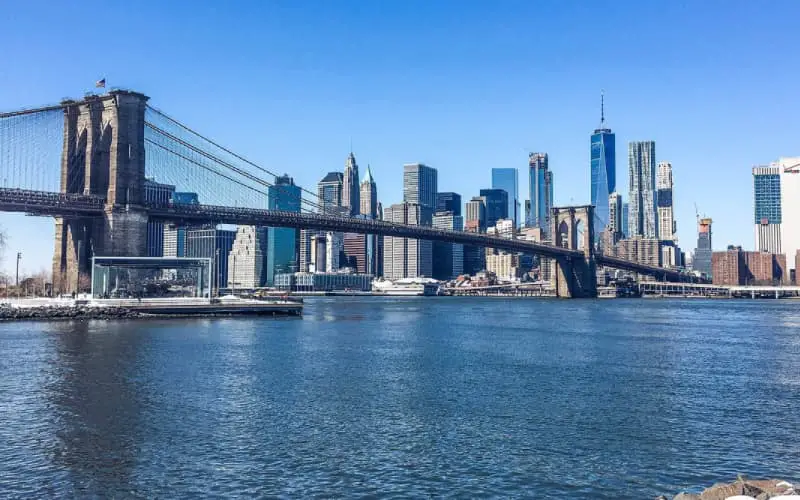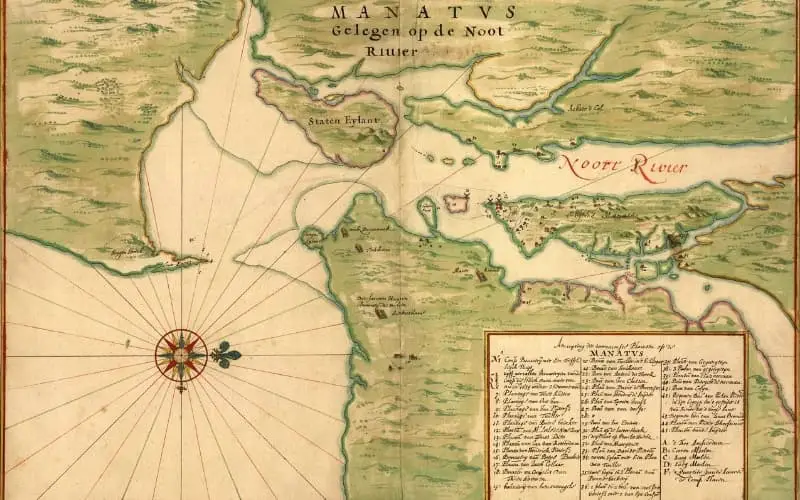

The Netherlands has a long and rich history as seafarers and explorers. Many places in the world have been discovered or occupied by the Dutch. As a result, you can still see Dutch influences in many places on earth, also on the other side of the world. Also in America, the influence of the Dutch in various American states can still be recognized, even in big cities like New York. This raises the question "did the Dutch discover New York?".
Back in the early 17th century, the Dutch discovered what we now know as New York when they were searching for a way to Asia through the States. The Dutch settled in the region, set up trading posts, and gave the region the name New Amsterdam.
The history surrounding the Dutch settlement of New York is quite multi-faceted and intricate. A lot of different events took place in the time that the Dutch had claimed over this region of America, creating a fascinating story that we can look back on today. There is a ton of history regarding the Netherlands and the United States that dates back about 400 years, which is precisely what we are going to dive into and discuss further today.
While the Dutch were the first to officially settle in New York and bring trading and a thriving community to this area, it was not technically discovered by them.
There has been some form of attention and settlement within this region of America since as far back as 10,000 B.C. The Iroquoian and Algonquian indigenous tribes proceeded to develop and prevail by 1100 A.D., and they primarily lived in the northeastern United States for some time.
They were able to thrive off the resources provided by the nearby ocean. Several other Native American tribes, such as the Mohawk, Chonnonton, and Nanticoke tribes have called New York home over the years, as well.
In the 1500s, an Italian explorer by the name of Giovanni da Verrazzano became the first European to officially discover the land that makes up New York. He likely landed at the very end of Long Island, and he continued to sail north and discover several other pieces of North American territory, including Block Island, Narragansett Bay, and the New York Harbor.
Verrazzano gave the New York region the name New Angouleme, and it was occasionally visited by other explorers before the Dutch finally made their way and settled there.

Back in the early 1600s, Dutch settlers that were a part of the Dutch East India Company sailed across the Atlantic from Amsterdam in search of a way to India. This was nearly 100 years after Verrazzano sailed and explored the northeastern United States.
When the travelers reached what we now recognize as New York, they kept sailing through the waterway thinking it would lead them through the States and eventually into India. Englishman Henry Hudson happened to be a part of this crew, so the name of this waterway was officially titled the Hudson River – which still holds today.
The Dutch are credited for being the first people to claim land in New York, so they are indeed acknowledged for contributing to the discovery of it.
Upon the arrival of the Dutch explorers in 1614, they set up trading posts for fur, and the colony was recognized as New Netherland – which extended into other surrounding regions such as present-day New Jersey, too. This was the first official Dutch settlement in all of North America.
If you look on a map of New York today, this colony is correlated to the area of Albany. It took a few years for this colony to grow and expand, but when it did, it was officially coined New Amsterdam. New Amsterdam became the capital and centralized location of New Netherland.
After the Dutch settlers developed their successful fur trading system in New Netherland, the construction of Fort Amsterdam officially began. The fort was built to defend against any attacks as well as to protect the facility where the fur trade took place.
Fort Amsterdam served as a hub for trading and even as a refuge, as it provided shelter with barracks and a church on top of the protection from outside intrusion. This fur that was traded here was extremely valuable to many due to its ability to be fashioned into waterproof hats.
Soon thereafter, Peter Stuyvesant came onto the scene and was chosen as the director-general (essentially the governor) of New Netherland. In 1653, New Amsterdam was finally dedicated as its very own city.
In a short amount of time, the number of citizens that began to call New Amsterdam home climbed to 1,500 individuals. In all of New Netherland, that number was closer to 9,000 by 1664. The people that lived here were from all over, not just the Netherlands.
The trading systems that took place in New Netherland proved to be very successful and a means for creating allyships, especially with the Native American tribes that were already living here. Stuyvesant certainly left a mark on New York, as there are still numerous places throughout Manhattan that are associated with his legacy.

After about 50 years of settlement in New Amsterdam, the Dutch ended up forfeiting their land to British colonizers due to threats of war.
The most people that ever lived in New Netherland was around 9,000, and the British did have way higher numbers and much stronger reinforcements to use against the Dutch. To avoid unnecessary conflict and harm, the Dutch decided to surrender peacefully.
The British swiftly changed the name of the region from New Amsterdam to New York. Fort Orange, which was another major establishment built by the Dutch in New Netherland, was changed to the name Fort Albany, as well.
While the Dutch did not want to surrender New Amsterdam and all the work and effort that was put into it over the years, surrendering it was a better choice for them than fighting in multiple deadly wars and battles.
When the surrender took place and the peace treaties were signed, this officially ended the immediate relationship and involvement that the Netherlands had with the United States.
This does not mean in any way that influences were not left behind in America from the Dutch – in the northeastern US among other regions, plenty of Dutch influence is very much still apparent today.
There would be no present-day New York that we all know and love if all these events and the involvement of the Dutch did not occur. The English did not make any of the people that called New Netherland home leave or give up their property, and some Dutchmen were even elected as political figures throughout New York.
If you happen to pay a visit to New York – especially Manhattan and Albany – you cannot explore this area without seeing and experiencing all the impacts that the Dutch left behind. Let’s take a look at some of the immediate influences that the Dutch left behind that we can still see today.
Many words that originate from the Dutch vernacular have stuck in the United States. Words like "cookie", "coleslaw", and even "Brooklyn" – to name just a few – all originated from the Dutch language.
America is a melting pot of cultures, and with that comes a wide variety of cuisine. Treats like cookies, pancakes, various pastries, and doughnuts can be traced back to the Netherlands, as well as pretzels and coleslaw.
Throughout New York, the impact that the Dutch left behind is still plainly seen in the architecture throughout the city. The style of roofing known as a mansard roof is an extremely Dutch form of architecture, and it can be seen in areas like the Hudson River Valley.
The next time you find yourself walking the streets of New York, imagine the elaborate past that events that ended up taking place to land you in these current surroundings. It is hard to grasp everything that occurred on this land, but when you look hard enough, many of the signs are all still there.
If you would like to learn a bit more about all the influence that the Netherlands has had on the entirety of the United States, check out our other blog regarding this topic here.
It is so interesting to think about the fact that the Dutch likely had no idea just how much influence they would end up having on the United States when they accidentally landed in New York all those hundreds of years ago.
In the grand scheme of things, the Dutch were not in the region of New York for all that long, but they certainly left a lasting impression that is still amazingly seen and felt today.
New York would likely be so much different without the settlements that the Dutch made back in the 1600s, and the strong relationship that the Dutch and Americans have with one another today would not be in the place that it is.